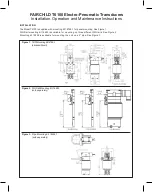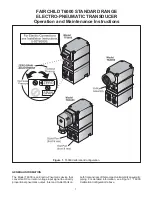
FCC ID: K6620285X20
IC ID: 511B-20285X20
VX-3R Operating Manual
throughout the currently-selected operating band.
Two basic frequency navigation methods are available on the VX-3R:
1) Tuning Dial
Rotation of the DIAL knob allows tuning in the pre-programmed steps established for the current operating
band. Clockwise rotation of the DIAL knob causes the VX-3R to be tuned toward a higher frequency, while
counter-clockwise rotation will lower the operating frequency.
If you press the [F/W] key momentarily, then rotate the DIAL knob, frequency steps of 1 MHz will be
selected. This feature is extremely useful for making rapid frequency excursions over the wide tuning range
of the VX-3R.
Note: Do not forget to pull the DIAL knob to rotate the DIAL knob.
2) Scanning
From the VFO mode, press and hold in the [BAND] key for one second, and rotate the DIAL knob
while
holding in the
[BAND]
key
to select the bandwidth for the VFO scanner, then release the [BAND] key to
begin scanning toward a higher frequency. The scanner will stop when it receives a signal strong enough to
break through the Squelch threshold. The VX-3R will then hold on that frequency according to the setting of
the “RESUME” mode (Set Mode Item 75: SCN.RSM). See page ?? for details regarding Scan Operation.
If you wish to reverse the direction of the scan (i.e. toward a lower frequency, instead of a higher frequency),
just rotate the DIAL knob one click in the counter-clockwise direction while the VX-3R is scanning. The
scanning direction will be reversed. To revert to scanning toward a higher frequency once more, rotate the
DIAL knob one click clockwise.
Press the PTT switch momentarily to cancel the scanning. This only stops the scan; it does not cause
transmission to occur.
Notice: The VX-3R may receive very strong signals on the Image frequency. If you experience
interference that you suspect may be coming in via an “image” path, you may calculate the
possible frequencies using the formulas below. This information may be used in the design of
effective countermeasures such as traps, etc.
3.579545 MHz x n
11.7 MHz x n
(n is an integer: 1, 2, 3, …..)
Transmission
Once you have set up an appropriate frequency inside one of the 144 MHz or 430 MHz Amateur bands on
which the VX-3R can transmit, you’re ready to go on the air! These are the most basic steps; more
advanced aspects of transmitter operation will be discussed later.
Vertex Standard Co., Ltd.
10











































